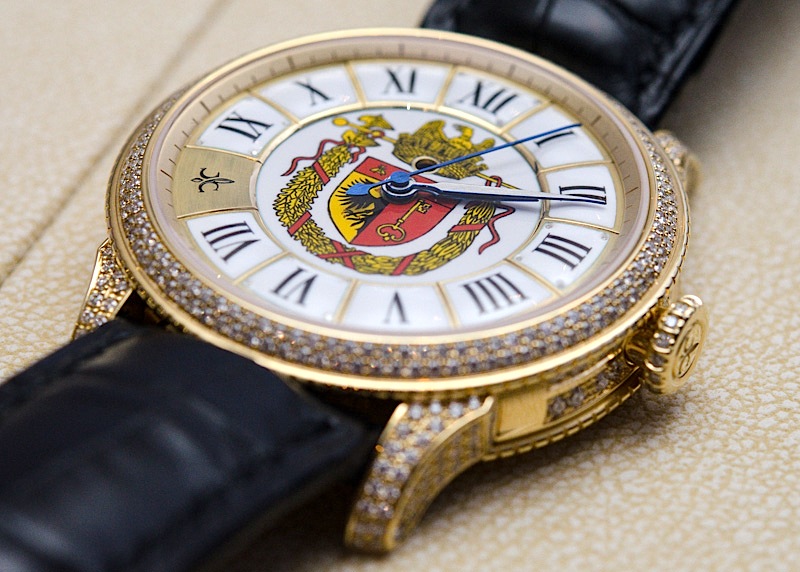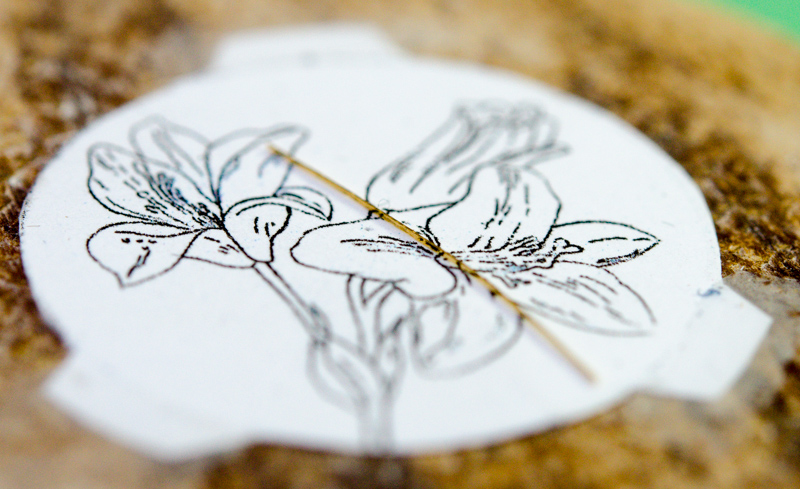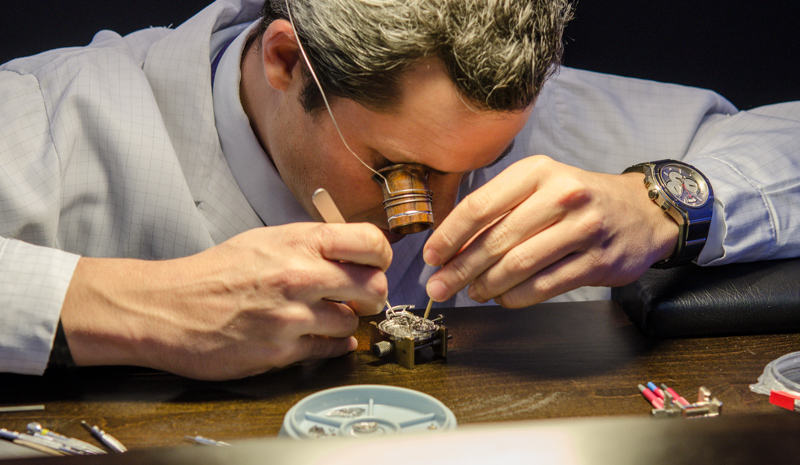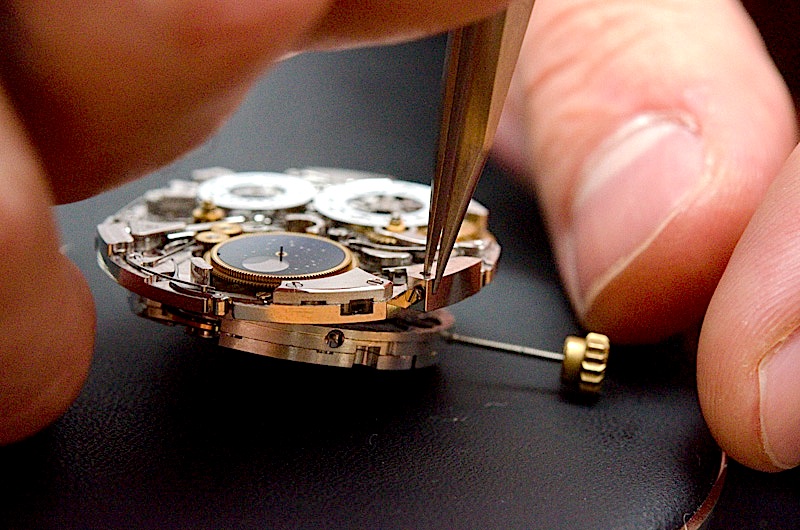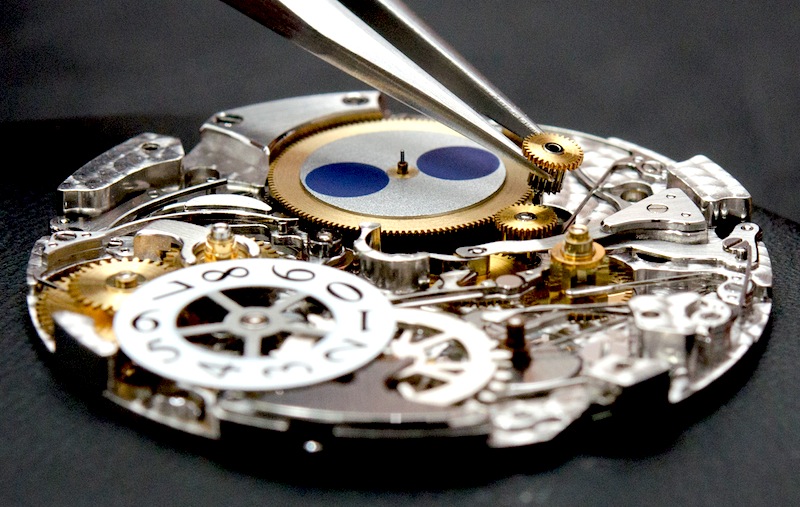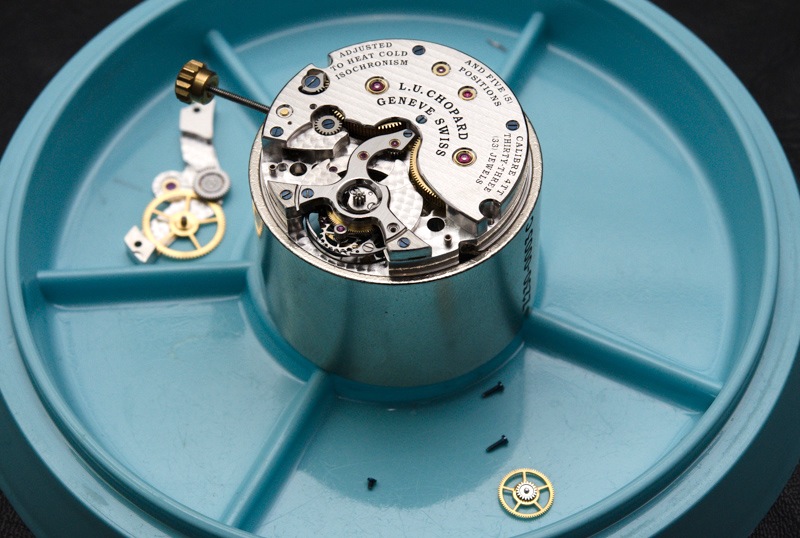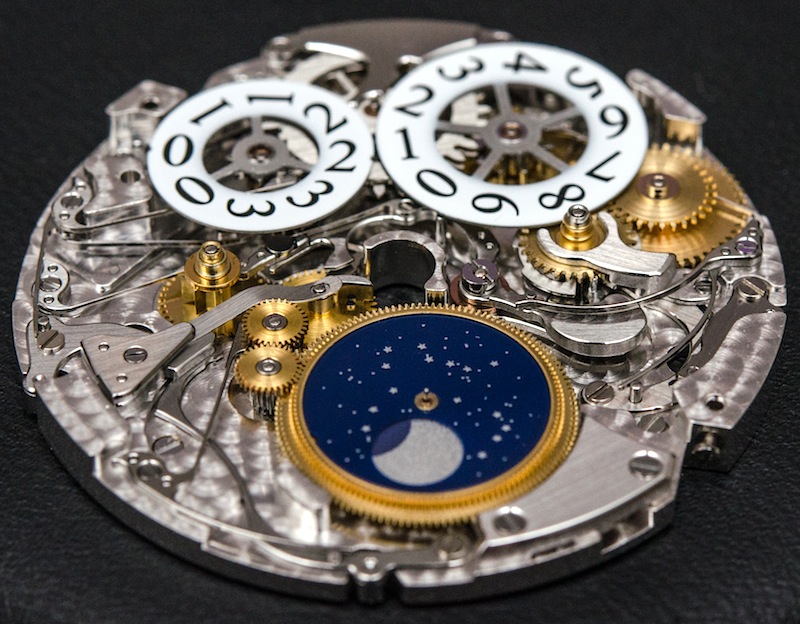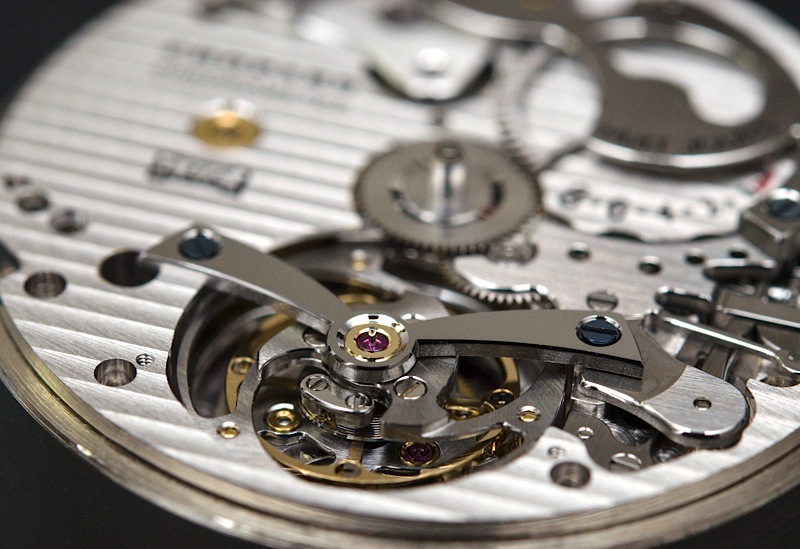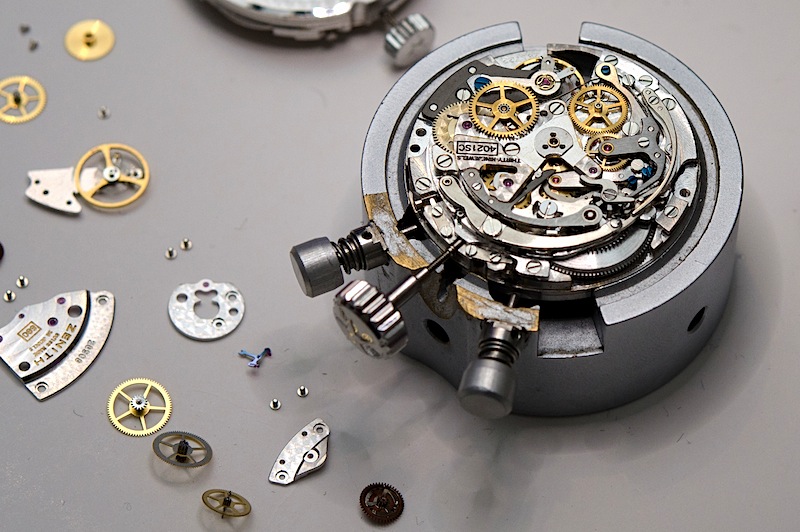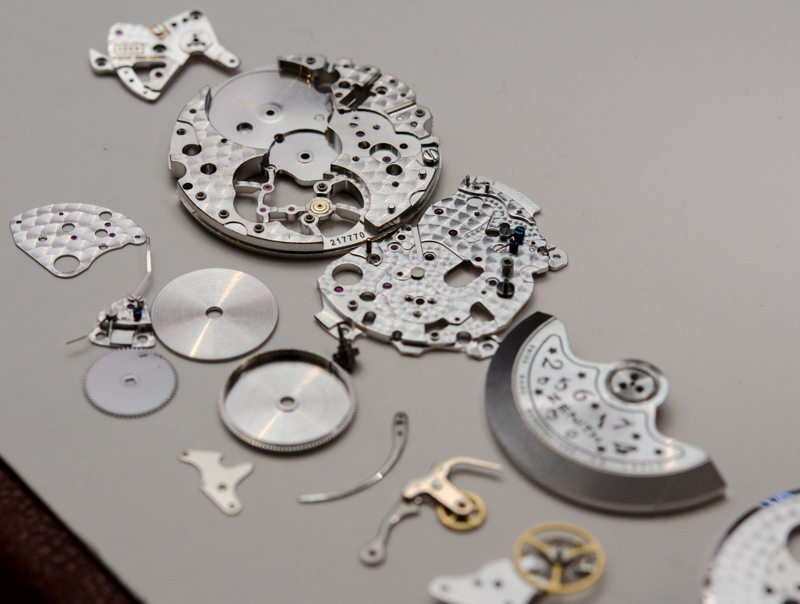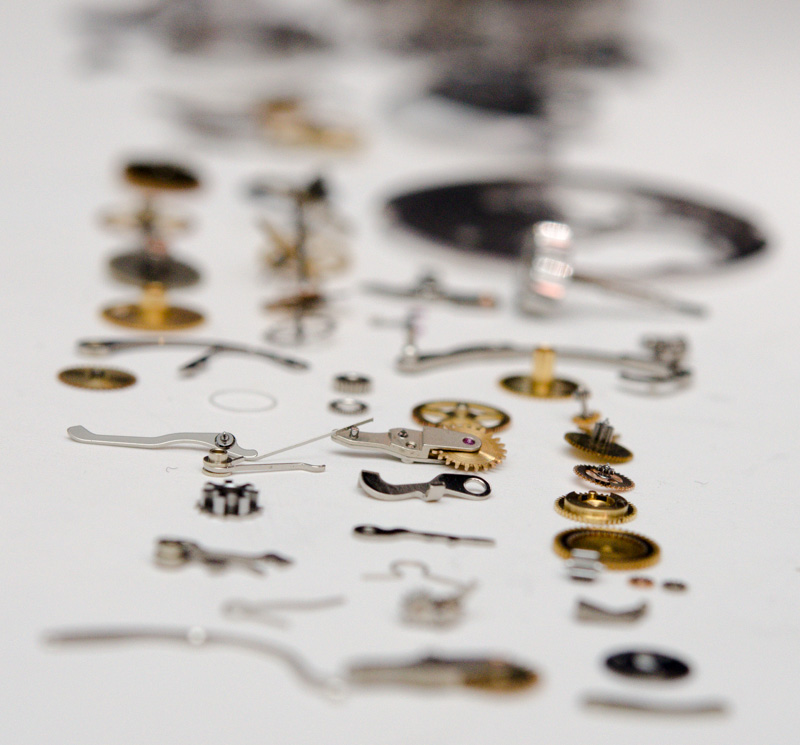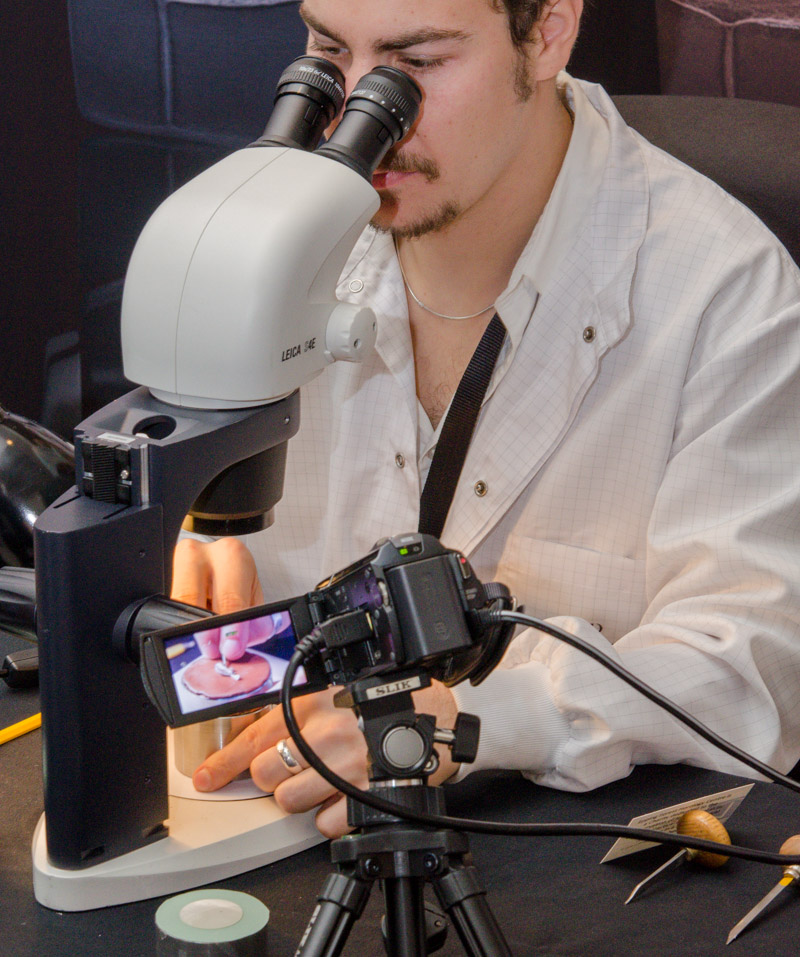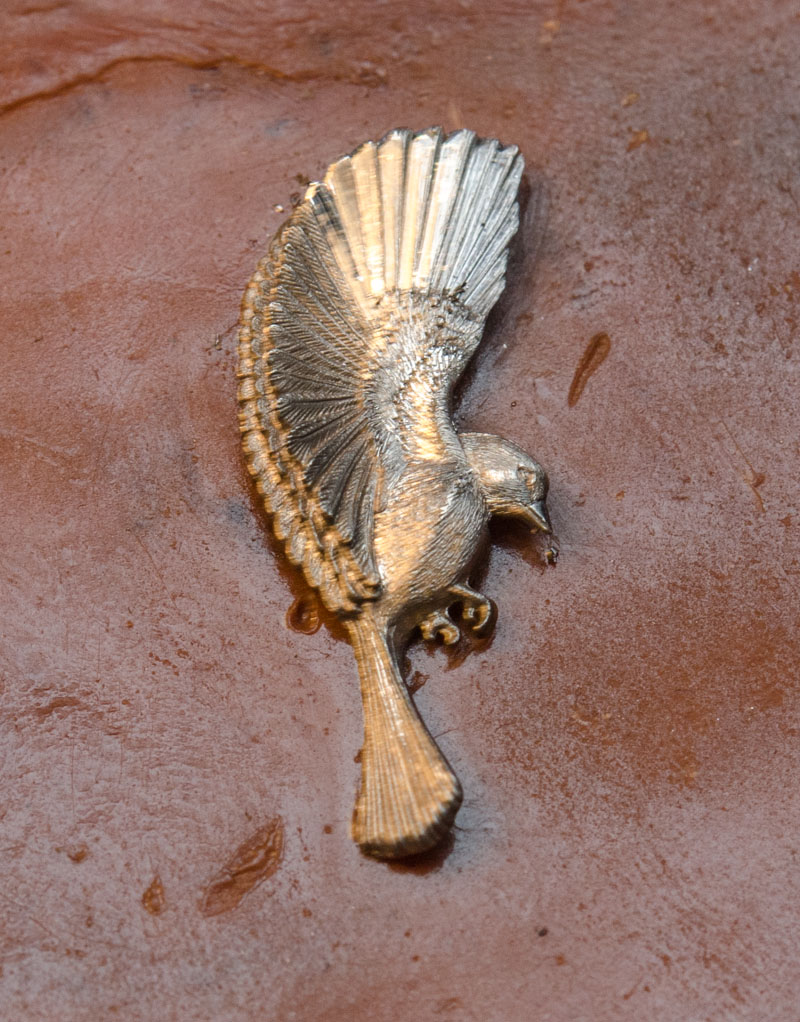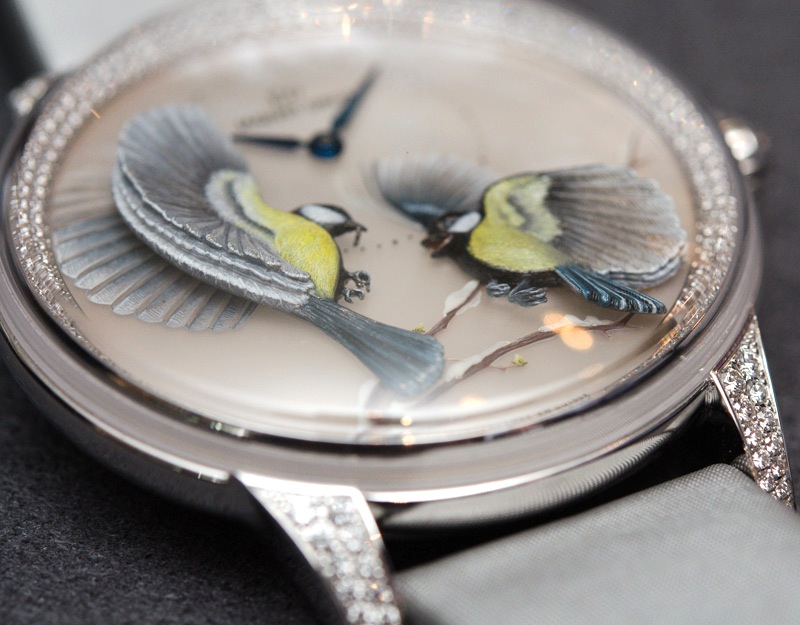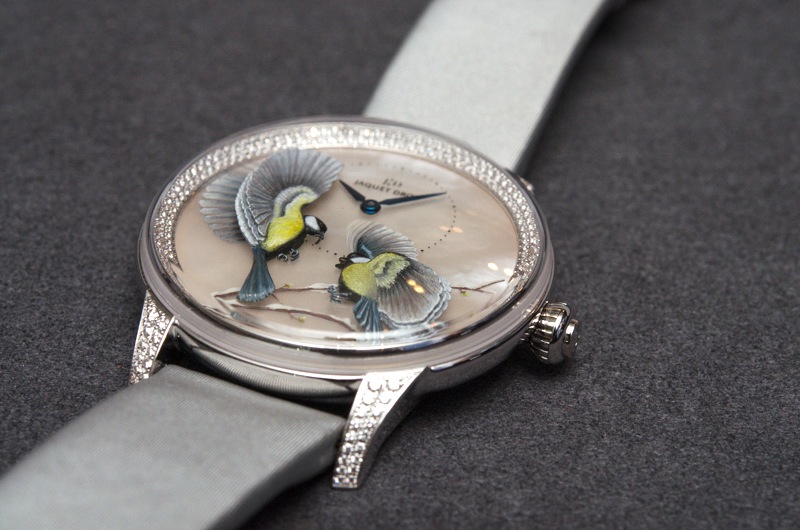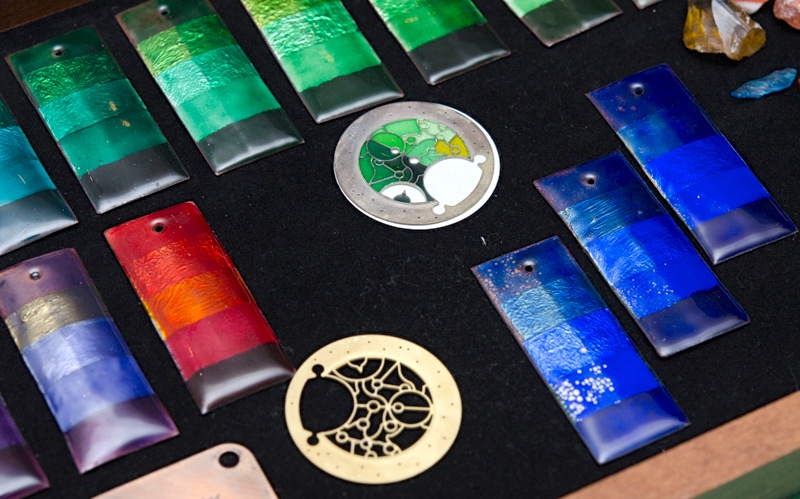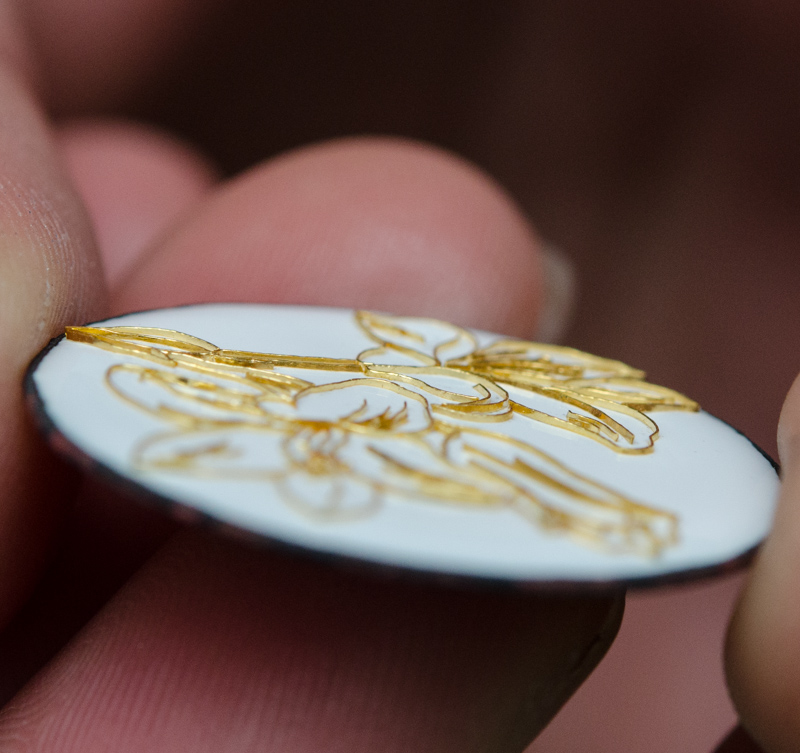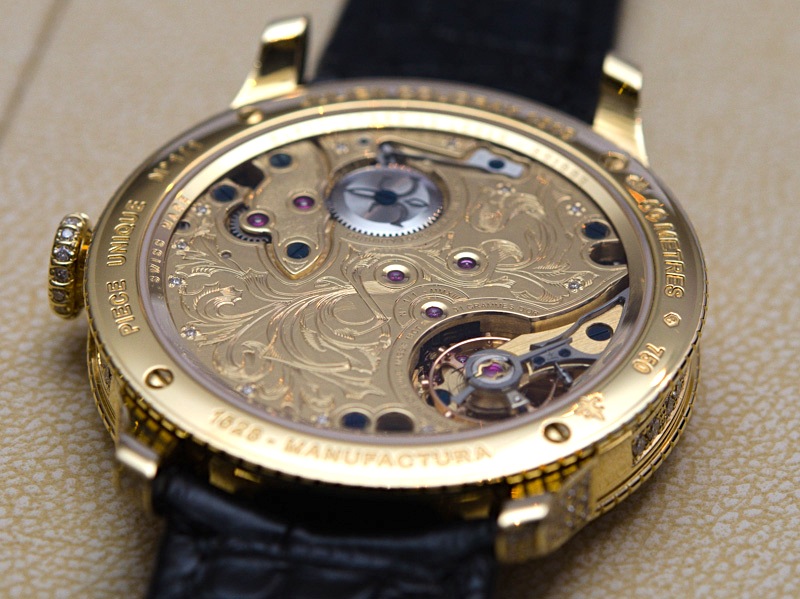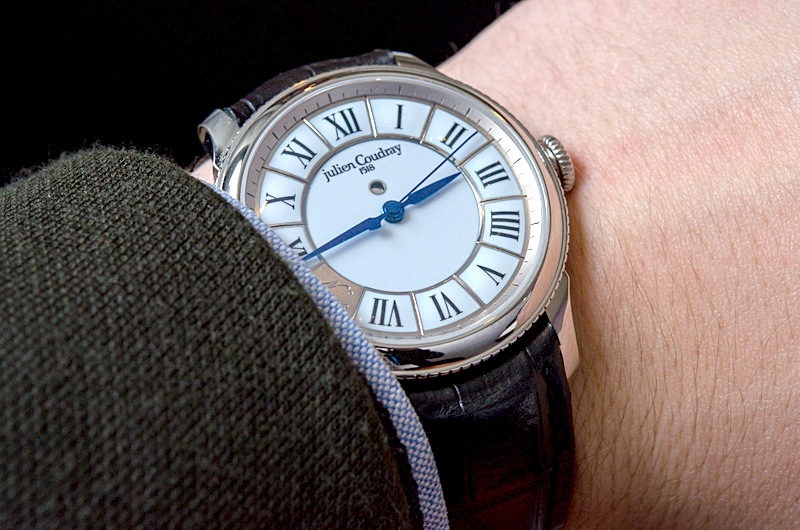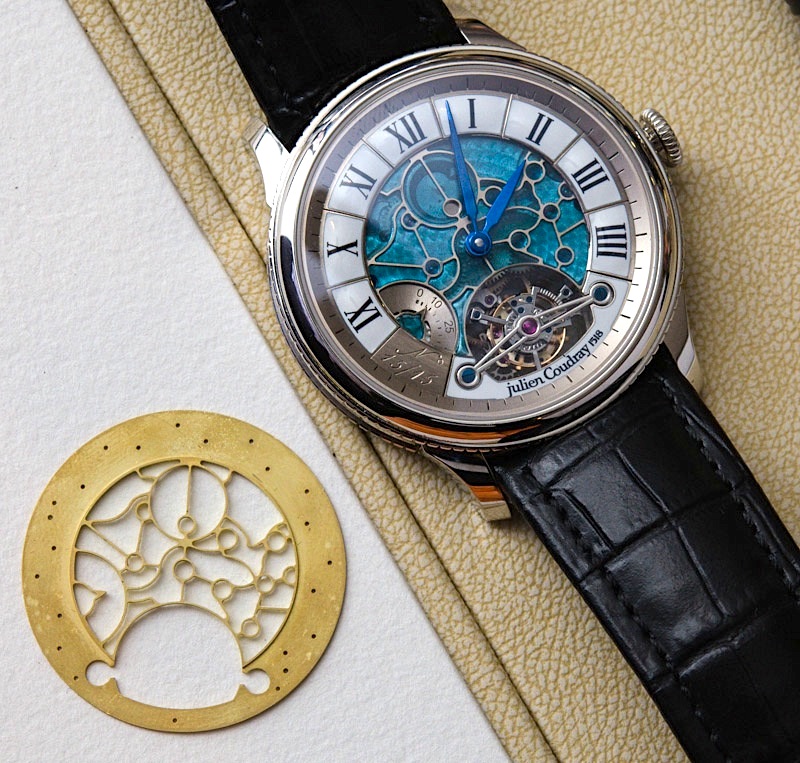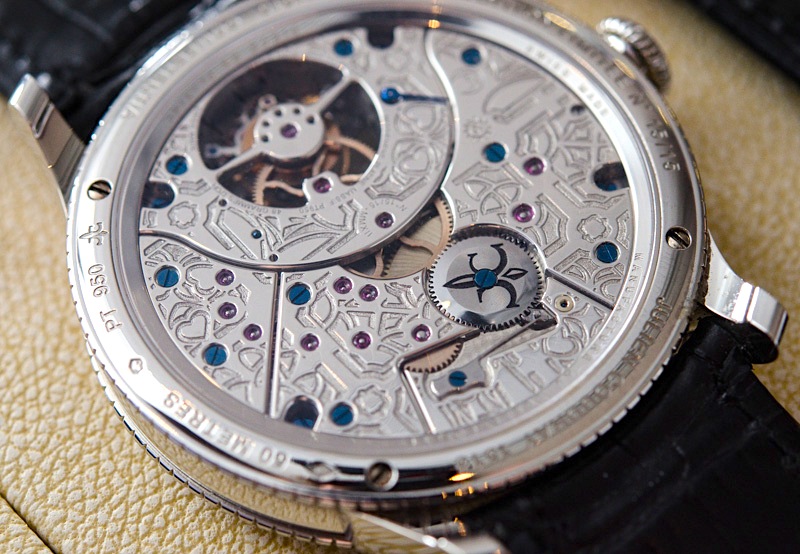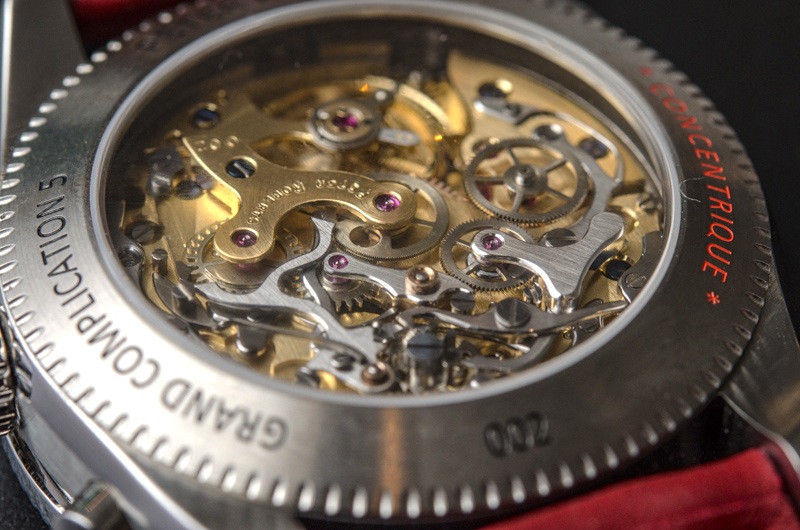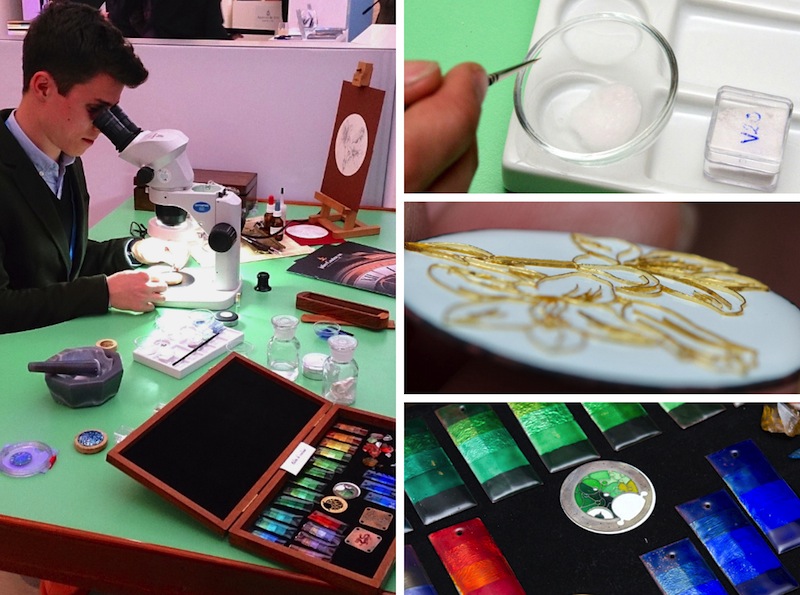
Julien Coudray 1518 had one of their enamel dial makers demonstrating the intricacies of the craft – I couldn’t resist and gave it a try as well
Speaking of enhancing appreciation, it was particularly fascinating to meet the men and women behind those small, yet extremely creative and powerful companies that are often referred to as ‘indie brands’. Their approach and passion for what they do is often greatly different than what is usually seen from the mammoths of the industry. Over time we will look at many others but for now let me bring you a stellar example: Julien Coudray 1518. In stark contrast with the name, it is a very young brand that competes in the haute horlogerie segment. Their annual production tops off at around 50 high-end watches and they manufacture nearly everything in-house, with the usual exception of the balance spring, jewels and the sapphire crystal.
At SalonQP they had a small enamel painter workshop set up by their booth with the intention of demonstrating some of the steps involved in creating astoundingly intricate, but literally ever-lasting dials. Enameling is a very complex process that requires a high level of expertise. When it comes to creating the base materials and then achieving the desired colors involves what I would refer to as superhuman skills and dexterity. It is of no surprise then that all intricacies of enamel dial manufacturing cannot be told here – but will certainly be discussed at length in a separate article. What I can tell you about here though is the way such demonstrations affect one’s approach to the luxury watch industry as well as this often and undeservedly ignored craft.
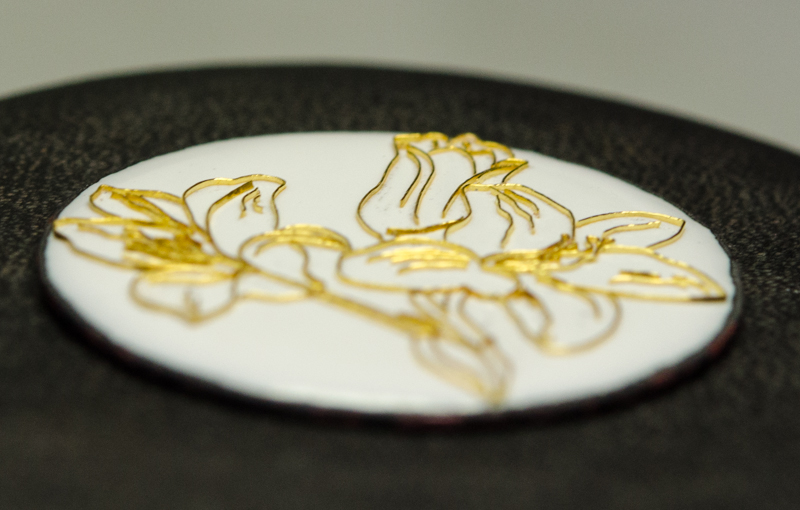
First image: A tiny strip of gold laid on a printed design template. Second image: a dial with the gold contours set and ready to be painted
There are several different techniques to enameling but what I tried myself involves the following basic steps. The selected design – in this case some flowers – are pencil-drawn on a plain white enamel dial. Since my drawing skills are sub-par compared to those of any five year old, I started with a dial that already had a flower drawn on it. With that done what you need to do is take what could mostly be described as tiny strips of gold, one after the other, and while looking through a microscope bend them using tweezers. These miniature gold strips will serve as the contours of the drawing so they need to be bent to the exact shape of the particular line that they will cover. On the image above you will see what a finished piece looks like once every piece has taken its final shape and is set on the dial.
There is a good reason why all this might sound and appear to be impossible. I tried to bend one of these barely visible strips of gold under the microscope but I couldn’t even hold the two ends of the thing simultaneously, let alone bend the piece to the desired shape. If by some miracle – or years of practice – you manage to get it right, then the dial with all the gold contours in their place is cooked at 820 degrees Celsius. It is done to fuse the dial and the gold and create a solid piece that can be worked with. Then, just like in kindergarten, you basically apply different colors of enamel with a brush into this labyrinth of gold.
It’s clearly anything but as easy as that sounds. You have to apply the paint and cook it several times as it shrinks in the oven and hence leaves blank areas. Furthermore, you have to make sure that you get the desired colors exactly right. It is a major, major pain in the neck (literally), and I must say that I was amazed by the extent of patience and expertise that is required to get even remotely close to perfection when making an enamel dial. Again, more on this in a dedicated article.
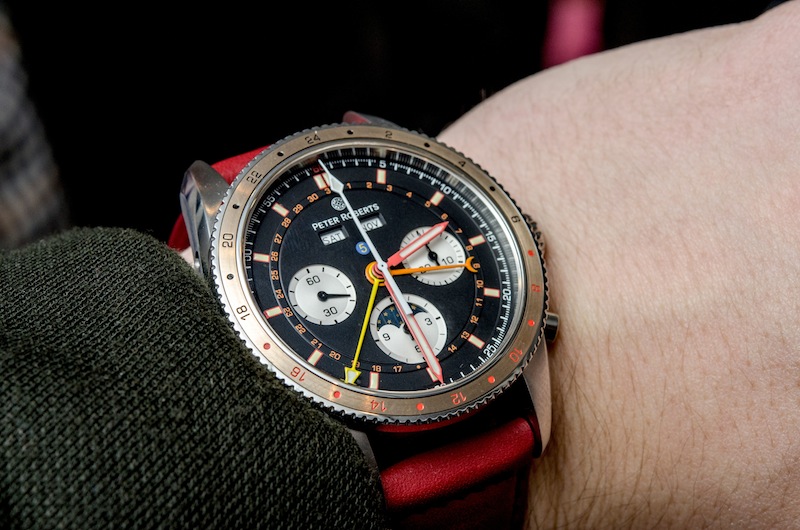
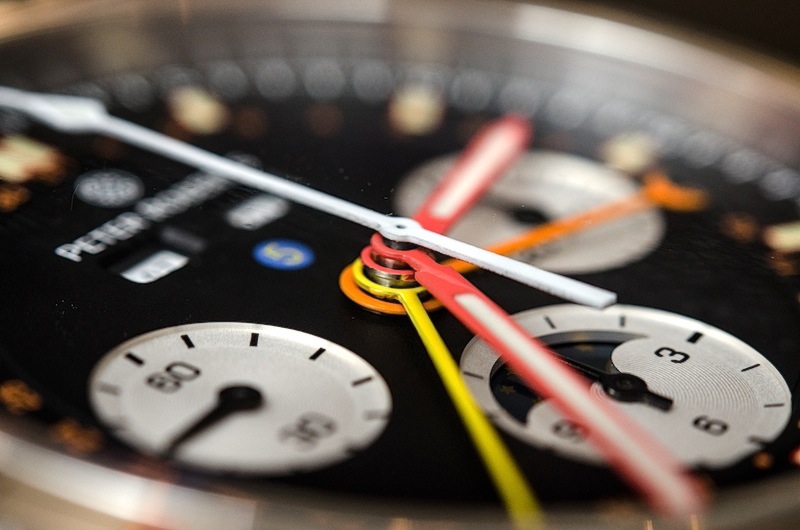
Peter Roberts’ new, modern version of the Concentrique Grand Complication 5 on my wrist; and the fabulous, colorful stack of hands
While not every major and minor brand decided to demonstrate a craft that they excel at, it should not at all mean that they are not worthy of our attention! A most fitting example has to be Peter Roberts and his Concentrique Grand Complication 5 watch. Our James Stacey wrote about this watch as it was announced some months ago, but it was at SalonQP that we first had some hands-on time with this magnificent piece. The name sums this watch up perfectly. Unlike the usual three or four hands, here you have five hands mounted co-axially in the centre of the dial. They indicate the hours, minutes, chronograph seconds, GMT and the date of the month.
I had the great pleasure of meeting Peter Roberts himself. He is a well-known name in the industry and it is solely he who builds all 44 pieces that will ever be made of these watches. Actually, he created the original version of this watch at the age of twenty as his graduation project from the WOSTEP (Watches of Switzerland Technical and Educational Program) watch making school. What he did at the time was modify a Valjoux 88 movement so as to accommodate all the functions and make for such a unique way of displaying them. Meeting him – and seeing the original watch that he made 40 years ago – was a special occasion for several reasons.
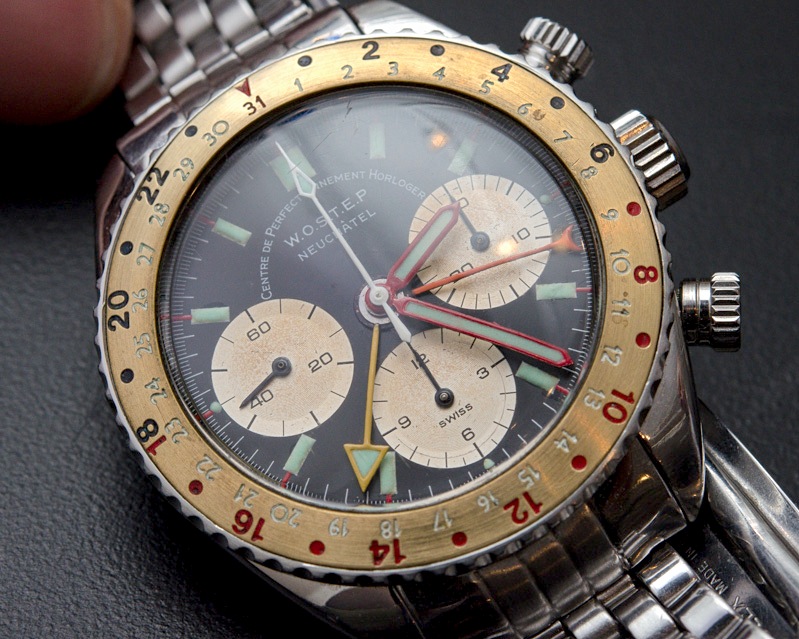
The ‘original’ Concentrique Grand Complication 5 off the wrist of Peter Roberts. Notice the modified Rolex GMT bezel and the Daytona pushers?
It is an old cliché but seeing a watch ‘in the metal’ is a completely different experience than judging it from images or 3D renders – regardless of their quality. There is nothing comparable to actually holding the timepiece in your hand and putting it on your wrist, not to mention doing that while the man who is responsible for the entire product is standing next to you. As I was at the booth of Peter Roberts this was exactly the case and – to top it all off – I had the chance to look not only at this new, modern series but the original watch that he built in 1972 as well (pictured above).
And this is exactly what I felt SalonQP was about. Those who attend may rest assured that they will get to personally meet the people behind some of their favorite brands, that there is a chance of shaking hands and exchanging thoughts with every exhibitor regardless of whether he/she is the founder, the CEO, a watchmaker or the expert of another craft. This creates a special opportunity to look at the industry from a more personal point of view. It is a genuinely fun and yet professional way of improving your understanding of the industry and perhaps even trying your abilities in a few of watch making’s many indispensable crafts. And all this, collectively, is why I recommend you to mark the 2014 event in your calendar. salonqp.com

